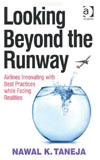By: Nawal Taneja |
Full screen
|  |
|---|
The airline business model has changed dramatically in the past 25 years as a result of numerous forces, such as the development and the resounding successes of low-cost carriers; incorporation of evolving information and distribution technologies; efficiencies and effectiveness of advanced regional jets; establishment and subsequent growth of the Gulf-based airlines; proliferation of undiscovered ancillary revenue strategies, and consolidation.
In my opinion, it is the trail-blazing flight path of the low-cost carriers and the Gulf-based airlines that are forcing the deep-seated transformation of the airline business model. The critical success factor in both cases is their value position. The Gulf-based carriers have developed and promote an enormously appealing value proposition, a superior product at competitive or lower prices, through the optimisation of four factors: their geographic location; efficient ultra-long-range aircraft; lower costs because of the lack of legacies, and the integrated strategies between the airlines, airports, various government agencies, and the financial community.
Basically, three states in the Gulf had the ambition, foresight and the willingness to promote and co-ordinate, in a timely manner, the development of their flag carriers with the needed infrastructure and enabling regulatory policies. Imagine how the landscape might have looked had the governments in countries with large populations and fast-growing economies, such as Turkey and Egypt, had the foresight to have taken similar initiatives.
GAME CHANGERS
The changes in the airline business model during the past 25 years will pale against the next 25 for a further four reasons. First, expansions of the low-cost carrier model (into long-range intercontinental operations and code-share cooperation with legacy carriers) and the network/fleet of the Gulf-based airlines will accelerate at a spectacular level.
Second, game-changing aircraft (such as the Boeing 787, the Bombardier CSeries, and an advanced four-to-six-seat jet for on-demand services) will have a dramatic impact on the airlines' networks worldwide.
Take the case of the CSeries. This new generation of aircraft combines dramatic improvements in economic efficiency with increased payload-range and performance, giving airlines on all continents the potential to redesign their networks to capture more passengers. Third, changing digital and mobile technology, coupled with value-adding integrators (such as Google), will change the way people shop for and experience travel. Passengers will finally be able to see not only the results of mass customisation, but also seamless door-to-door travel - à la Federal Express.
Technology (relating to aircraft, the internet, and social networks), coupled with non-conventional thinking on the part of management, will finally enable some airlines to provide the services demanded by the new generations and make reasonable returns possible for them. Fourth, the market share of global travel held by carriers based in North America and Europe will continue to decline, while the share held by carriers in Asia, Latin America, and the Middle East will increase. Airlines that do not adapt to the new realities will simply not survive.
BOOK RELEASE
Full screen
| LOOKING BEYOND THE RUNWAY The current chaos, led by the unusual downturn that started at the end of 2007, is proving to be a serious challenge for the global airline industry. While most airline managements are developing strategies just to survive through this chaos, a few airline managements see it as a great opportunity for positioning their airlines to achieve profitable and sustainable growth. |
Source: Airline Business











































